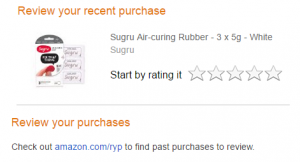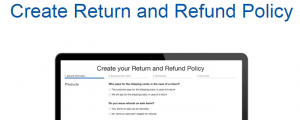- Sep 06, 2016
 0
0- by A2 Marketing Team
Setting up an online store has never been easier. There are several platforms that make it trivially simple to display your products and offer them to the entire world from the comfort of your home. However, when it comes to securing sales, you’re on your own.
After you succeed in getting potential customers to your store, you still need to convert them. Thankfully, the web is full of collective wisdom you can draw upon to convert visitors into loyal customers.
In this article, we’ll introduce five simple steps that any online store should follow if they hope to be competitive in the cut-throat world of e-commerce.
Step 1: Replace Generic Product Images
There are very few things as detrimental to the quality of a piece of web content as generic stock images, and this maxim holds true for product images as well. Everyone uses stock images from time to time, but customers want to see exactly what they’re getting before they click on that Buy now button.
Taking great photographs of physical products is an art unto itself. Virtual items, however, are an entirely different matter. A lot of people make the mistake of taking screenshots of their entire screen, but it’s far better to focus on the areas of interest to your customers. For example, if we were selling our hosting services on an online store – which is unlikely, but bear with us – it would be far better to display a side-by-side comparison of our plans instead of a screenshot of the entire homepage:
In addition, you want to remove as much white space from your images as possible so that viewers can focus on what’s important. While the above image was decent, here’s a better alternative:

This technique can – and should – be applied to any virtual product to improve the quality of your listings.
Step 2: Improve Your Copy
Being specific pays off when it comes to describing your products. Potential clients don’t want to be wooed with empty promises or fluff text – they want to know what each product does and how well each product works.
Good product copy should be tight and concise. Amazon is a great model to emulate in this aspect – as well as most others – since their product descriptions are short and tend to include a list of features:
Bulleted lists are a fantastic way to break down your product’s features or display pros and cons without overwhelming your readers with endless paragraphs. Finally, you might want to use comparison tables within your descriptions if they’re part of a product line – or just to showcase how they perform against the competition.

Displaying reviews on your product pages can also boost your copy if the reviews highlight some of the product features you’ve mentioned. We’ll get to that in a minute!
Step 3: Offer More Payment Options
E-commerce has been around for long enough that most people who shop online already have a preferred payment method. Whether they prefer PayPal, Amazon Payments, Google Wallet, Bitcoin, or plain old credit cards – people tend to stick to their favorite method.
Payment methods need to be added to your store manually either by following instructions provided by the payment processor, or by installing a pre-built extension if you’re using a platform such as WooCommerce.
It is almost universally true that you should set up PayPal payments since they control such a massive share of the market. WooCommerce makes it easy to integrate with PayPal by using PayPal Express Checkout, and many other e-commerce platforms offer similar easy PayPal integration options.
WooCommerce also offers extensions for most other major payment gateways. The more payment options you add, the more likely it is that your customers will find their favorite among them. However, there is also such a thing as having too many options and we recommend that you only add those you can process efficiently to avoid any shipping delays. Learn more about WooCommerce and how easy it is to get your store up and running.
Step 4: Incentivize Reviewers
Earlier, we mentioned that you can use reviews to reinforce the claims you make in your product copy. The more reviews you have, the safer customers will feel about purchasing your products (as long as they’re positive).
The problem is that most customers don’t leave reviews. Which is understandable – we’re all busy people, and the internet won’t browse itself – but this does pose a problem for anyone with an online store.
Amazon tackles this issue by sending an occasional follow-up email asking you to rate your past purchases according to your satisfaction and prompting you to leave a review.
A bolder alternative would be to provide incentives in exchange for reviews. If you use WooCommerce, it’s easy to do this by using the Review for Discount extension, which provides reviewers with automatically generated coupons for use within your store in exchange for their feedback.
If you choose to take this route remember to offer modest discounts so as to discourage those who would seek to exploit the system!
Step 5: Offer Guarantees
Few people want to take the risk of purchasing a product that isn’t backed by any sort of guarantee or return policy. Dealing with product returns might sound like a hassle but it’s a major step towards building trust and establishing yourself as a legitimate outlet.
The question is, how exactly does a small store go about crafting this kind of document? Hiring a lawyer to advise you is probably the safest – and most expensive – option, but there are alternatives. TermsFeed is a service that provides templates for return policies and many other types of basic legal agreements – including terms of service – pretty much everything you need to get started.
Any template you choose will need to be thoroughly reviewed and adjusted to fit your store, but as long as it has a solid foundation, you should be good to go!
Conclusion
When launching an e-commerce store, some people think that their journey will be as simple as listing their products and waiting for the sales to roll in, but we know that’s a pipe dream. It takes hard work to generate traffic to your site and even more work to convert visitors into customers. However, if you take the time to optimize your product listings by following the five steps we’ve outlined, you’ll be a step – or two – ahead of most of your competitors.
Let’s recap the five simple steps you can take to improve your e-commerce conversion rate:
- Use unique, high-quality product images.
- Constantly work on improving your product copy.
- Provide customers with multiple payment options.
- Use incentives to give your customers a reason to write reviews.
- Make sure your buyers feel safe buying from you by offering a guarantee and clear return policy.
Image credit: Pixabay.

















